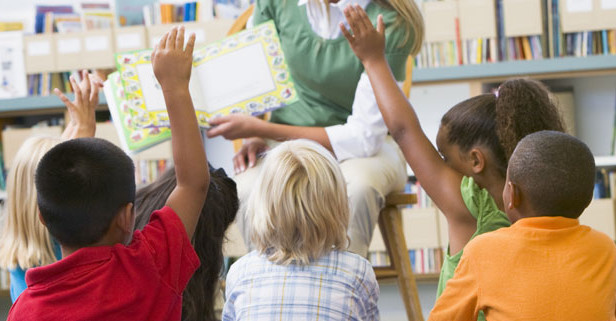By Dave Gannon
The 2012-13 school year was my first year as a San Antonio Youth Literacy Reading Buddy. After just one year, I’m convinced that more people need to get involved in programs like this one.
My Buddy is an impressive fellow: a recent immigrant to the U.S. from Malaysia, he speaks and reads four languages (Arabic, Malay, Sabah and English), English being the most recent addition to his linguistic repertoire.
Although obviously extremely bright and a great lover of stories of all kinds, my Buddy was reading below grade level and was doing poorly with reading comprehension. After working with him for several weeks it became apparent that his weaknesses were vocabulary, plurals and possessives. We talked about these weaknesses, and that’s when I learned that Arabic was his first language—Arabic is read from right to left, and it turns out the indicator for plural and possessive is at the front of the word. I showed him how it works in English, and we practiced it with a word bank and word games. I also picked stories with words he likely would not know and we reviewed their meanings as we read.
If you don’t already know, SAYL Reading Buddies are community volunteers who go through basic training and then work with second grade students who are reading far below grade level. They spend one hour once a week reading for thirty minutes each with two students at one of their public school partners. With this awesome and simple program, SAYL is directly affecting the SA2020 indicator of 3rd grade reading scores that ties back to our vision for Education in San Antonio. And when 3rd grade reading scores go up, the whole community improves.
My student loved our sessions. I normally picked him up at the end of his lunch period, but I quickly learned to stand outside and see where he was with his meal because the moment he saw me enter the cafeteria he’d jump up and take his tray to the garbage can no matter how much food was left on it. I made sure it looked like he was done before going in to pick him up.
When my Buddy was assessed at the beginning of the school year he was reading at a high First Grade level, though when we started he should have been at a mid-second grade level. At year’s end, after one year with me in the SAYL Reading Buddies program, he was reading at a beginning fourth grade level and his reading comprehension had improved dramatically.
I found the Reading Buddy experience to be an extraordinary one. It was a genuine blessing to see his skills improve and the concomitant growth in his self-confidence. It was also an eye opening experience to discover how much I could learn from a seven-year-old. He was not very well versed in American culture or history, so I went out of my way to pick books about those topics—the Revolutionary War, the life of the Plains Indians, the Old West and so on. He would then tell me about Malaysia and their culture and customs. I have actually traveled to Kuala Lumpur several times on business, but never had much time to spend sight-seeing or learning about the country. My Reading Buddy gave me a series of very fine lessons about Malaysian history and daily life.
I have been mentoring elementary school children in San Antonio since 1990. In 1990, there were no mentoring forums and precious few organizations around to help individuals get the training they needed to be effective mentors to our youth. While it has long been recognized that community members working one-on-one with individual student is incredibly beneficial on many fronts–students’ self-confidence, academic achievement and reduced disciplinary issues—few communities had the expertise to organize and harness those efforts in a meaningful and productive way. Today, thanks to program-focused organizations such as SAYL, and community-wide advocacy organizations like SA2020, things are changing on that front—very much for the better. As someone who has seen for years what tremendous effects an individual community volunteer can have on student’s lives, I can only rejoice that these organizations are beginning to effectively recruit and employ an ever-expanding population of community volunteers into those schools and communities most desperate for the benefits they provide.
I am genuinely grateful for my experience, and encourage anyone who’s interested to volunteer. I’m also looking forward to working with another SAYL Reading Buddy this coming school year!

